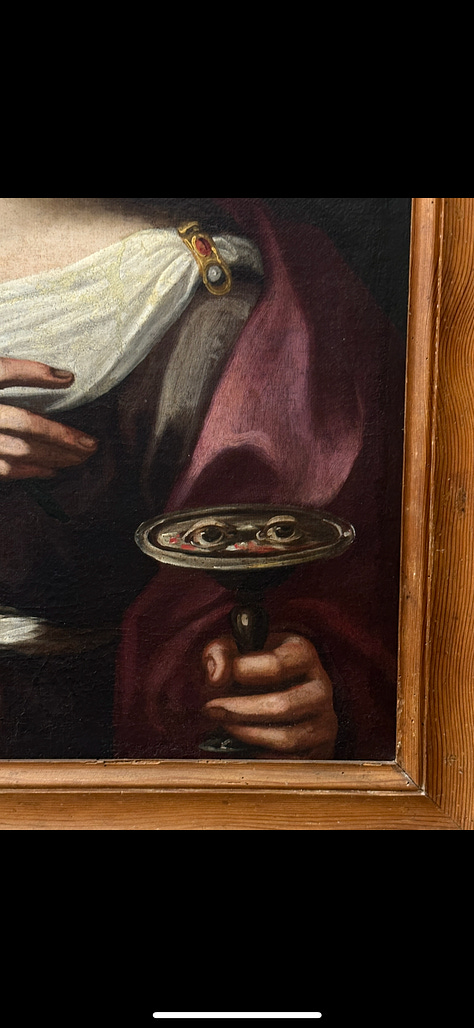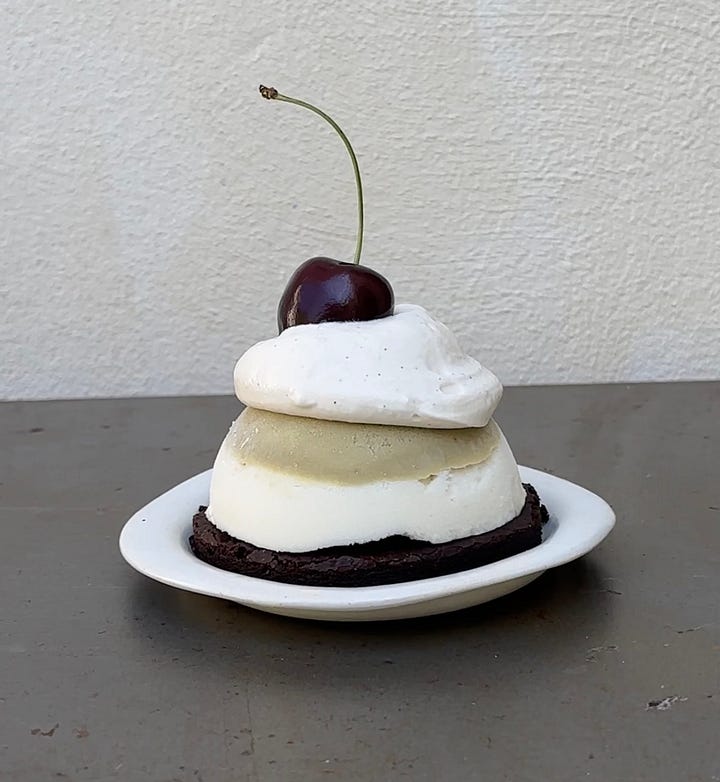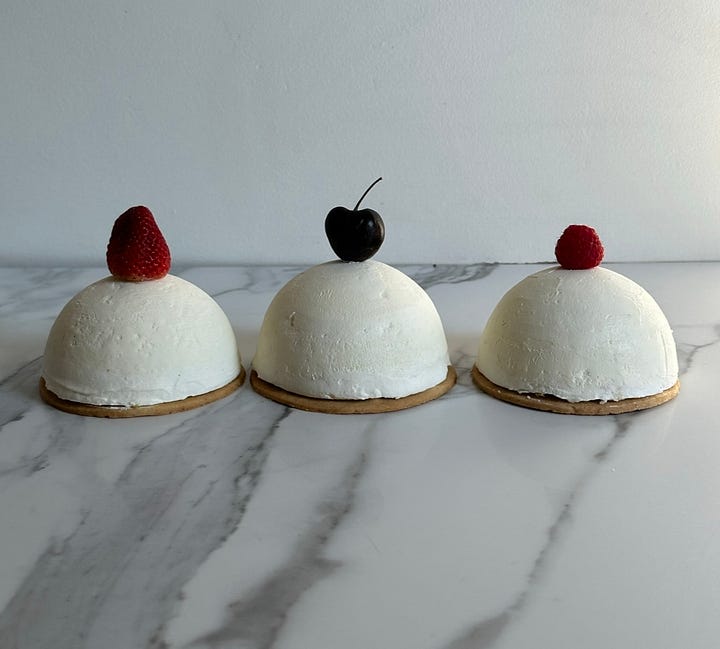in preparation for the sicily + rome food recommendations, i was looking back through some photos from museums and churches. i noticed a recurring motif in photos i had taken of renaissance art – women serving up human body parts on platters.
(from top to bottom. detail: salome with the head of john the baptist, caravaggio, 1609. detail: saint lucy, benvenuto tisi, 1535/1540. detail: santa águeda, Francisco de Zurbarán, 1630.)
while the medium and style differed, there were three narratives i found repeated. the most common representation i have seen, reimagined by artists rembrandt, titian, botticelli, and caravaggio (just to name a few), is the story of salome presenting the head of saint john the baptist on a platter. another representation i saw in both rome and sicily was that of st. agatha, the patron saint of catania, who endured numerous kinds of torture (stretched on a rack, burned, and whipped) including having her breasts removed with tongs, which she is represented holding on a platter. in a similar fate to st. agatha, st. lucy (patron saint of syracuse in sicily) was also martyred and had her eyes ripped out, which she is pictured holding on a platter.



i’m not quite sure what to do with this recurring motif – it definitely leads to some mixed emotions. but emotions aside, and looking through food, from my research only one of these stories has inspired its own dessert - st. agatha.
made for st. agatha’s festival day in sicily, minne di sant'agata also known as cassatella di sant'agata, or cassatina siciliana, is a small dome-shaped dessert topped with a candied cherry. the dessert, which resembles an abstracted breast, can be made a few different ways with all or some of the following components: icing, marzipan, shortcrust pastry, liqueur soaked sponge, sheep's milk ricotta, chocolate morsels, and candied fruit. the dessert is believed to have been inspired by breast-shaped desserts in ancient greece, and in sicily the pastries were originally made by nuns (more on the history here.)




(upper left - minne di sant'agata from a convent run bakery in palermo, i segreti del chiostro. the rest are some desserts i have made that were inspired by minne di sant'agata - upper right is a brownie sundae, and the lower is a pistachio cake)
i wondered why, despite all of this gore across all these stories, we were able to set the violence aside and enjoy a little sweet treat inspired by the torture of st. agatha. why is there not a traditional dessert of st. john? after all, this beheading is quite iconic in art and language (eg. the phrase - ‘head on a [silver] platter.’) but i quickly realized that breasts provide our first form of sustenance after being born, and thus, unlike eyes and a head, are something we already associate with food. further, the double entendre of the breast-shaped dessert being filled with a milk product is a bit witty.
i’m sure many of you reading this have different expertise and experiences than i, and can come up with a myriad of ways to digest these representations of women holding platters of body parts, through lenses of theology, feminism, and psychology, just to name a few. i am fascinated by all the different ways food and art relate to one another, whether it be art about food, or in this case a food that references a story and art. would love to hear your thoughts on this relationship and anything it brought to mind for you in the comments.







I would love to see a future recipe of the brownie sundae and how to get the dome shape (but if you can’t that’s fine!)